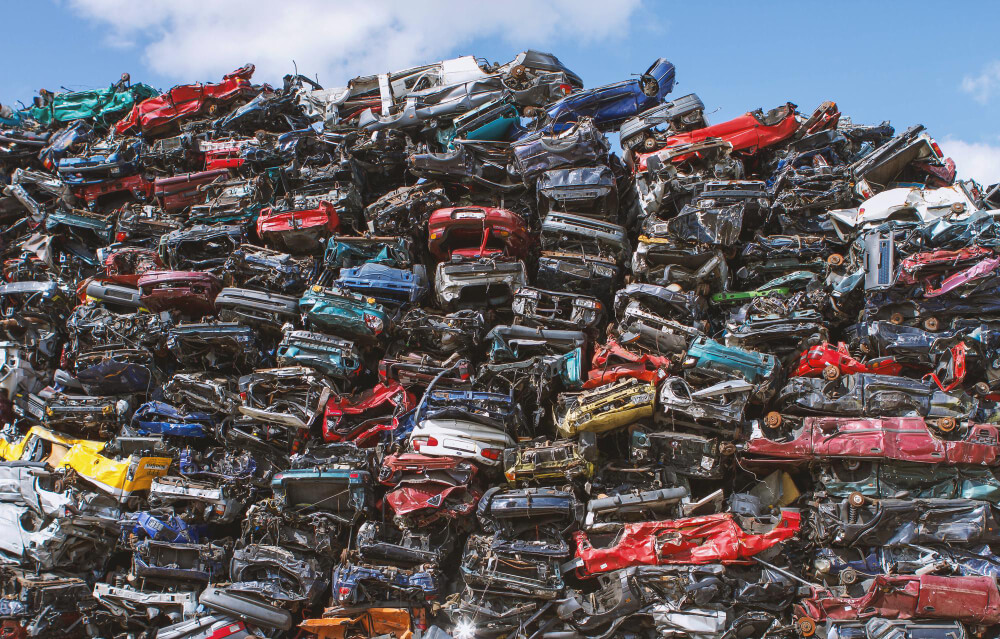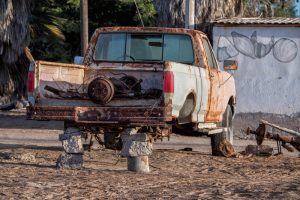You’ve finally decided to get rid of that old car sitting in your driveway. Once you call for junk car removal, have you ever wondered where your car actually goes and what happens next?
Most people think junk cars just get dumped in a big pile somewhere, but the reality is far more interesting and environmentally responsible. At Green Light Towing Service, we handle junk car removal throughout Virginia Beach and work with scrapyards that follow proper recycling procedures. Call us at 757-938-3378 when you’re ready to responsibly dispose of your unwanted vehicle.
This guide walks you through every step of the recycling process, from arrival at the scrapyard to final transformation into new steel products. You’ll discover how parts get recovered, learn about environmental safety procedures, and understand the technology that turns old cars into raw materials.
Initial Processing When Your Car Arrives at the Scrapyard
The moment your junk car reaches the scrapyard, it enters a carefully organized system designed to extract maximum value while protecting the environment.
Vehicle Documentation and Inspection
Every vehicle gets logged into a computer system that tracks its journey through the recycling process. Workers verify the title and check for any liens or legal issues that might affect processing. This paperwork step ensures everything is legally proper before dismantling begins.
The inspection process determines which category your car falls into based on its condition, age, and potential for parts recovery. Newer vehicles with valuable components get priority for parts removal, while older cars might go straight to the metal recovery process.
Hazardous Material Removal and What Happens to Your Junk Car Fluids
Before any dismantling begins, trained technicians drain all automotive fluids to prevent environmental contamination. This critical step protects groundwater and soil from harmful chemicals.
The fluid removal process includes:
- Engine oil and transmission fluid – These get filtered and sent to refineries where they’re processed into new lubricants
- Coolant and antifreeze – After filtering out contaminants, coolant gets recycled back into new antifreeze products
- Brake fluid and power steering fluid – These fluids require special handling due to their chemical composition
- Gasoline and diesel fuel – Any remaining fuel gets recovered and processed for reuse
Battery removal happens during this stage because car batteries contain lead and acid that require specialized recycling procedures. The plastic cases get recycled into new battery housings, while the lead gets melted down for new batteries.
What Happens to Your Junk Car: Parts Recovery and Resale Operations
The parts recovery process transforms your old car into a treasure trove of reusable components that help other vehicle owners save money on repairs.
Systematic Component Removal
Experienced dismantlers methodically remove valuable parts that still have useful life remaining. Engines and transmissions top the list because these major components can be rebuilt and resold at a fraction of new part costs.
Electronic components receive special attention in modern vehicles. Navigation systems, entertainment units, and engine control modules often retain significant value even in older cars. These components get tested before resale to ensure they function properly.
Interior parts like seats, dashboards, and trim pieces find new homes in restoration projects and repair shops. Quality leather seats from luxury vehicles command premium prices in the used parts market.
Quality Testing and Refurbishment
Not every part gets resold immediately after removal. Many components undergo cleaning, testing, and minor refurbishment to ensure they meet quality standards for resale.
Electrical components go through comprehensive testing procedures that verify proper function. Parts that pass inspection receive warranties that protect buyers and maintain the scrapyard’s reputation for quality recycled components.
Mechanical parts like alternators, starters, and air conditioning compressors often get rebuilt with new internal components before resale. This refurbishment process extends their useful life while providing affordable alternatives to new parts.
Environmental Safety and Hazardous Material Management
Modern scrapyard operations prioritize environmental protection through strict procedures that prevent contamination and ensure proper disposal of hazardous materials.
Tire processing involves several steps that keep rubber out of landfills. Tires get shredded into small pieces that become playground surfaces, running tracks, and road construction materials. The steel belting inside tires gets separated and recycled along with other metals.
Air conditioning refrigerant requires special handling because older vehicles contain chemicals that damage the ozone layer. Licensed technicians use certified equipment to capture and properly dispose of these refrigerants according to EPA guidelines.
Virginia environmental regulations govern every aspect of scrapyard operations. Regular inspections ensure facilities maintain proper procedures for fluid handling, waste disposal, and air quality protection. These regulations protect both workers and the surrounding community from potential environmental hazards.
Metal Recovery and Processing Operations
The metal recovery process represents the largest portion of value extraction from junk vehicles, with steel comprising roughly 60% of a typical car’s weight.
Steel and Iron Extraction
Vehicle frames and body panels contain different grades of steel that require separation for optimal recycling value. High-strength steel from safety structures commands higher prices than regular body panel steel.
Preparation for steel mill delivery involves cutting large pieces into manageable sizes and removing any non-metal attachments. Quality control procedures ensure the steel meets specifications that steel mills require for new production.
Non-Ferrous Metal Recovery
Aluminum recovery focuses on radiators, wheels, and some body panels in newer vehicles. Aluminum recycling requires significantly less energy than producing new aluminum, making it highly valuable for environmental and economic reasons.
Copper extraction targets wiring harnesses throughout the vehicle. Modern cars contain substantial amounts of copper wiring that retain good value in recycling markets.
Catalytic converters contain precious metals including platinum, palladium, and rhodium. These components require specialized processing to extract these valuable metals safely and efficiently.
The Complete Vehicle Shredding Process
After parts and fluid removal, the remaining vehicle hulk enters the final processing stage through industrial shredding operations.
Massive shredder machines reduce entire car bodies into small fragments in minutes. These powerful machines can process several cars per hour while maintaining safety protocols that protect workers and equipment.
Post-shredding separation uses advanced technology to sort different materials automatically. Magnetic separators pull out ferrous metals, while eddy current separators identify and remove aluminum and copper fragments.
The final material sorting achieves recovery rates exceeding 80% for most vehicles. Remaining materials that can’t be recycled get managed through approved disposal methods that minimize landfill impact.
Understanding What Happens to Your Junk Car: Timeline and Benefits
The complete recycling process typically takes between one to three weeks from arrival to final material shipment. Factors affecting processing speed include vehicle size, parts demand, and seasonal variations in scrapyard operations.
This comprehensive recycling system provides substantial environmental benefits. Steel recycling saves energy equivalent to powering millions of homes annually while reducing mining needs for new steel production. Every recycled car prevents approximately 2,500 pounds of material from entering landfills.
The economic impact extends beyond environmental benefits. Automotive recycling supports thousands of jobs in Virginia while providing affordable repair parts that help vehicle owners maintain older cars longer.
Making Responsible Choices for Your Junk Car
Understanding what happens to your junk car helps you make informed decisions about disposal methods. The automotive recycling industry has developed sophisticated processes that maximize material recovery while protecting environmental resources.
When you’re ready to dispose of your junk car in Virginia Beach, Green Light Towing Service works with certified scrapyards that follow proper environmental procedures. Call us at 757-938-3378 to schedule your vehicle pickup and start the recycling process that transforms old cars into valuable resources.




